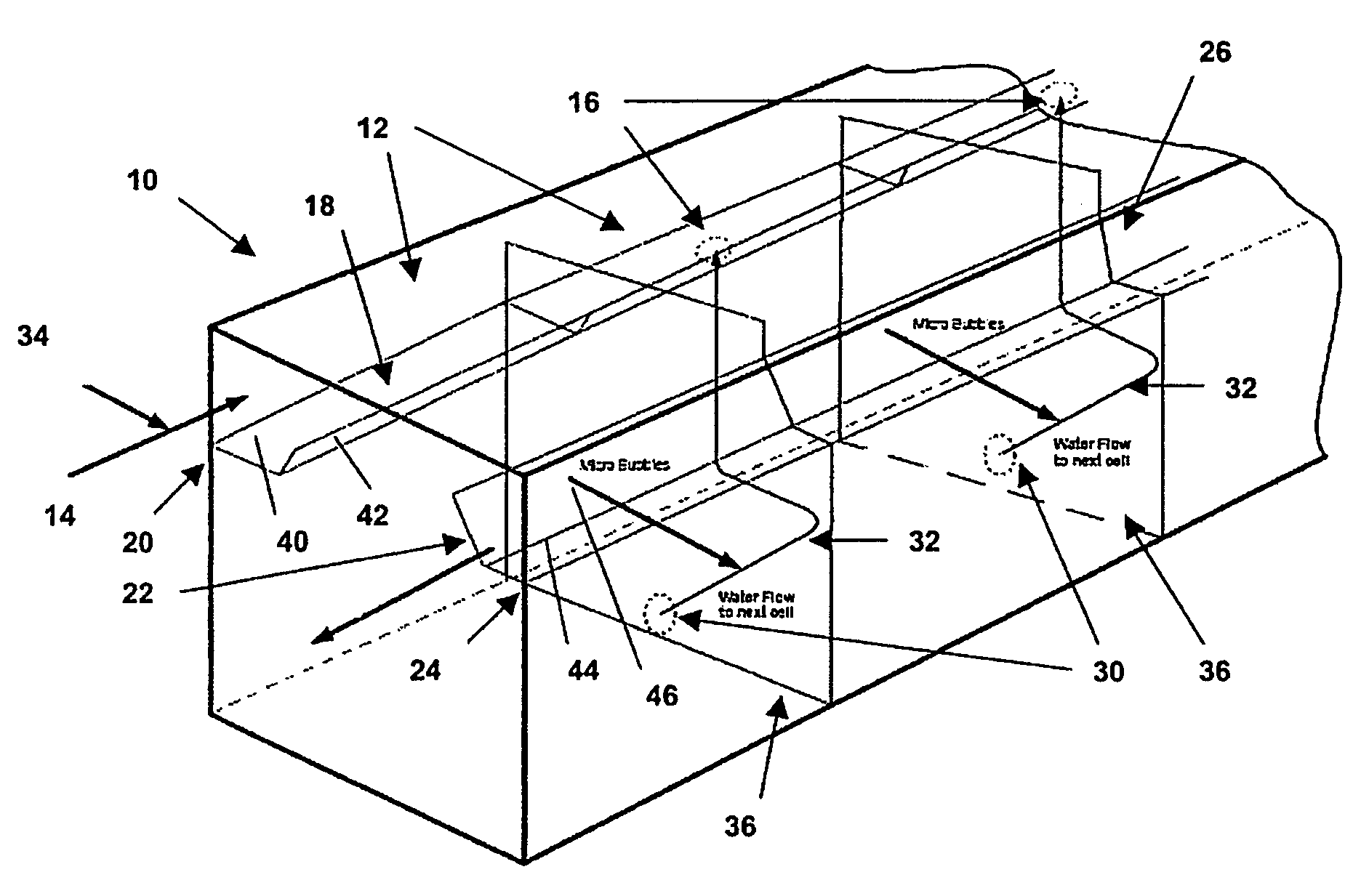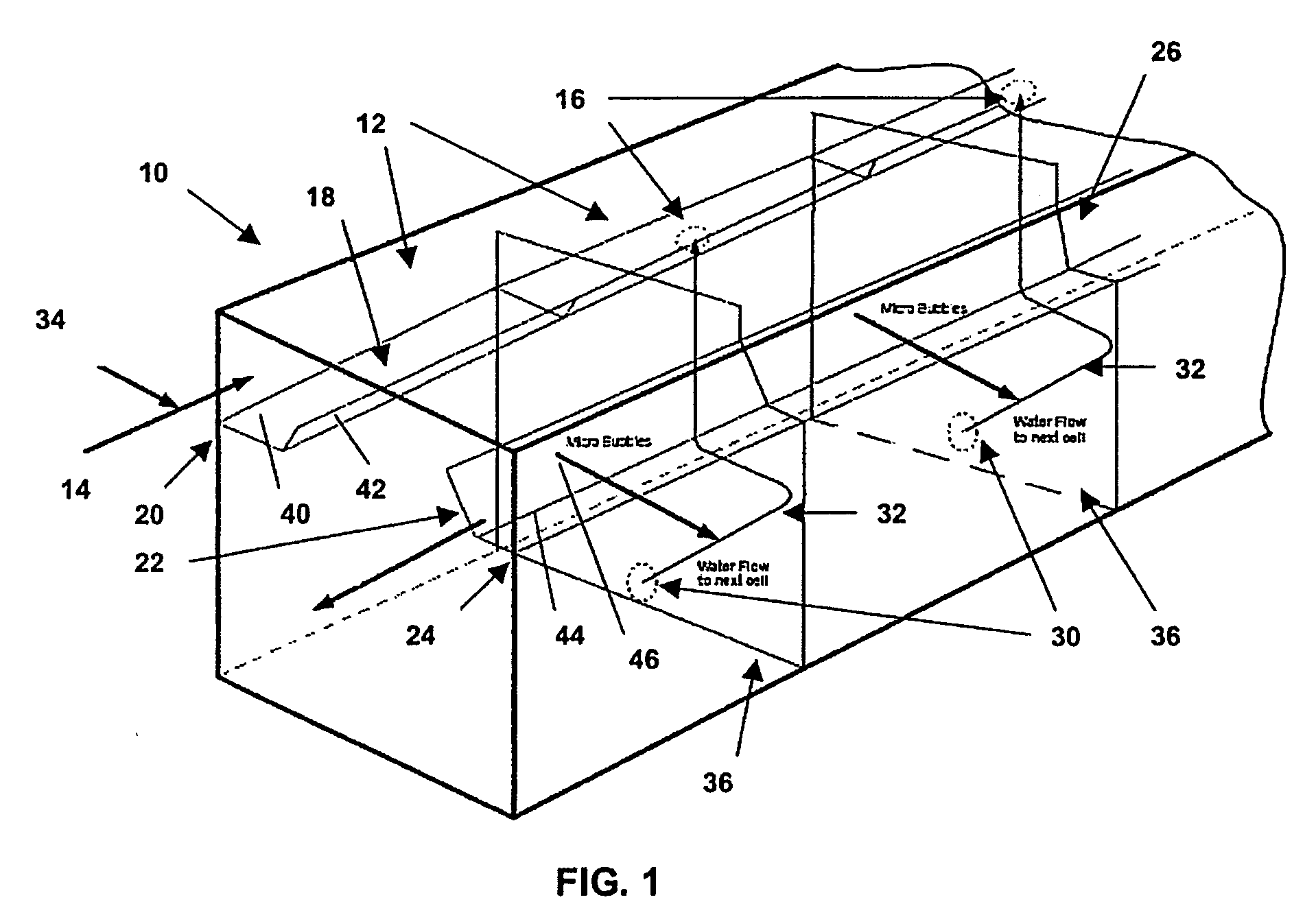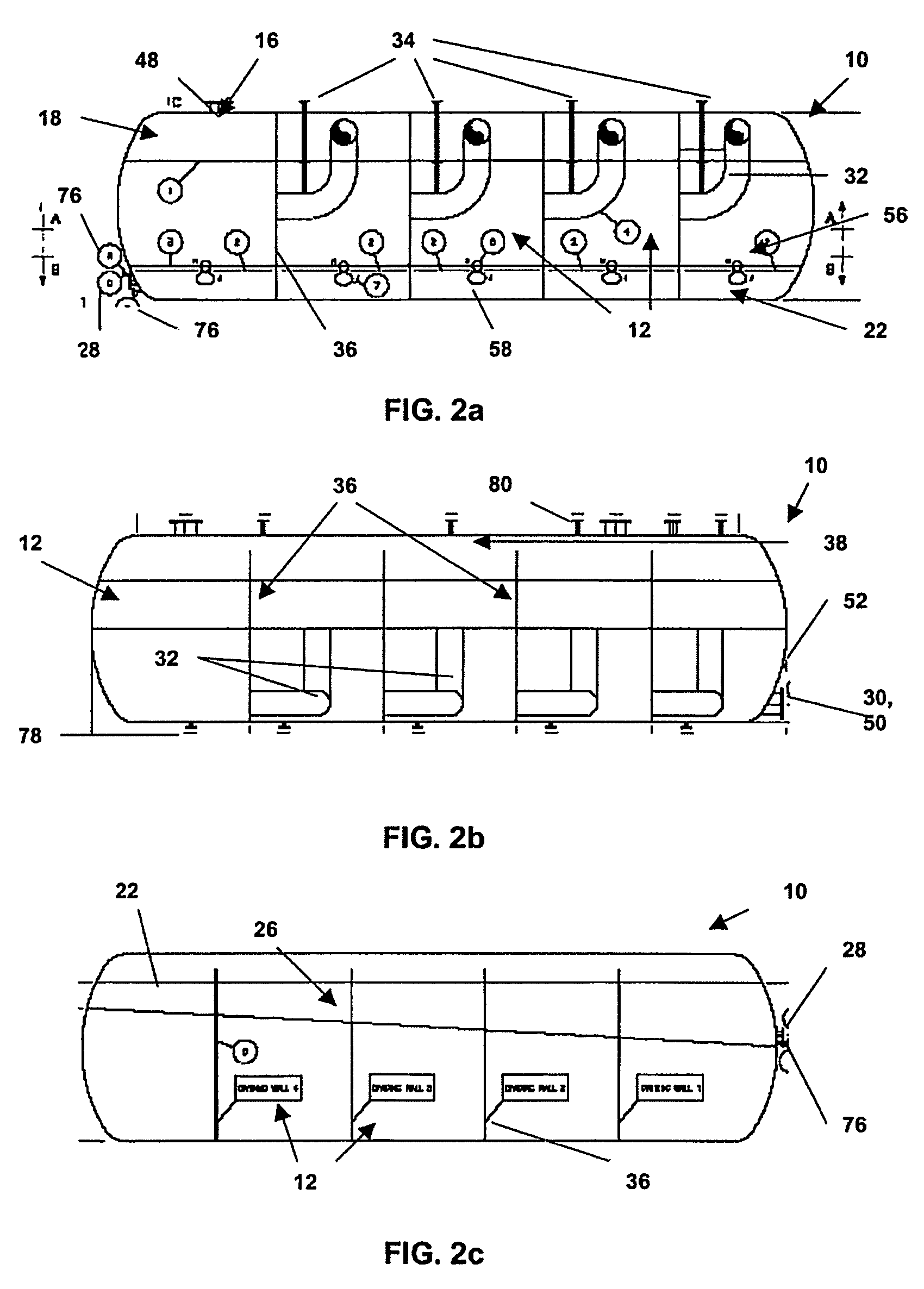Vessel and method for treating contaminated water
a technology for treating vessels and water, applied in water/sludge/sewage treatment, flotation, filtration separation, etc., can solve the problems of requiring substantial retention times, ineffective removal of oil droplets less than 50 microns, and often contaminated water produced by various commercial and industrial processes, etc., to achieve a high degree of control over gas rates/ratios, short lead time, and elimination of mechanical oil skimming equipment/steps
- Summary
- Abstract
- Description
- Claims
- Application Information
AI Technical Summary
Benefits of technology
Problems solved by technology
Method used
Image
Examples
Embodiment Construction
[0101] Referring now in detail to the accompanying drawings, there are illustrated several exemplary embodiments of water treatment vessels according to the present invention, each water treatment vessel generally referred to by the numeral 10. Referring specifically to FIG. 1, a simplified perspective view of a horizontally disposed vessel 10 is presented (this particular embodiment is rectangular in shape, although other shapes are possible, including some which are specifically addressed herein). The vessel 10 is divided into chambers 12 by means of vertical walls 36. An injection line 14 is in fluid communication with an inlet 16 of the first chamber 12, the injection line 14 for containing and transmitting contaminated water (not shown) from a source (not shown). The injection line 14 receives gas bubbles (not shown; preferably microbubbles, as discussed in detail below) from bubble injection means 34 which are in fluid communication with the injection line 14, allowing mixing ...
PUM
| Property | Measurement | Unit |
|---|---|---|
| diameter | aaaaa | aaaaa |
| temperature | aaaaa | aaaaa |
| diameter | aaaaa | aaaaa |
Abstract
Description
Claims
Application Information
 Login to View More
Login to View More - R&D
- Intellectual Property
- Life Sciences
- Materials
- Tech Scout
- Unparalleled Data Quality
- Higher Quality Content
- 60% Fewer Hallucinations
Browse by: Latest US Patents, China's latest patents, Technical Efficacy Thesaurus, Application Domain, Technology Topic, Popular Technical Reports.
© 2025 PatSnap. All rights reserved.Legal|Privacy policy|Modern Slavery Act Transparency Statement|Sitemap|About US| Contact US: help@patsnap.com



